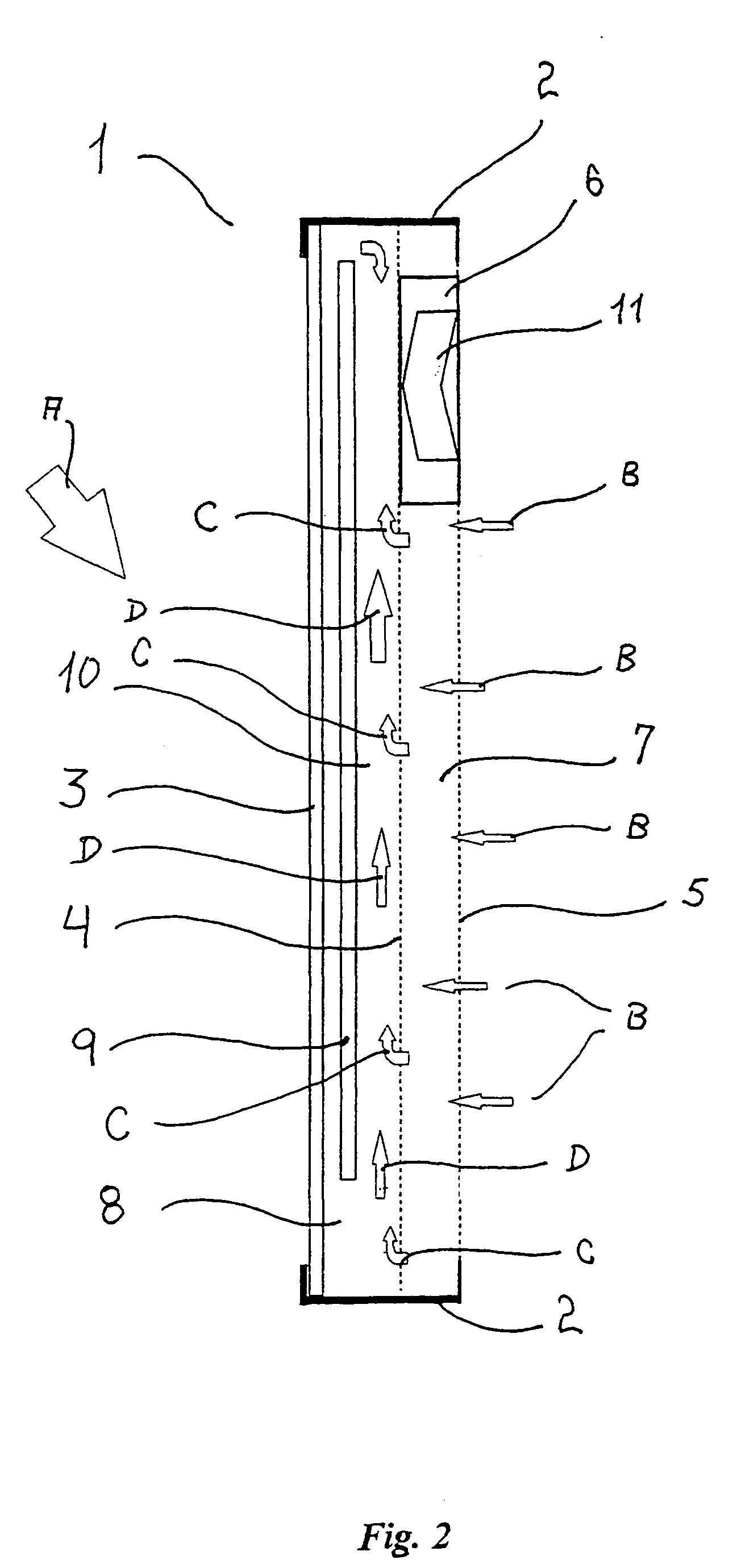Solar collector panel for heating ventilation air
a technology of solar collectors and solar collectors, which is applied in the field of solar collectors, can solve the problems of no longer effective convection insulation, and achieve the effect of improving the reliability of photovoltaic cell cooling and simplifying the manufacturing of solar collector panels
- Summary
- Abstract
- Description
- Claims
- Application Information
AI Technical Summary
Benefits of technology
Problems solved by technology
Method used
Image
Examples
Embodiment Construction
[0031]A solar collector panel 1 according to a first embodiment of the invention is shown in a longitudinal section in FIG. 1, in which an aluminium frame 2 holds a transparent front panel 3 made from a 10 millimeter plate of polycarbonate with elongated cavities defined therein to lower the weight thereof and improve the thermal insulation, a heat absorber means 4 made from a screen of black felt, and a back panel 5 made from a similar perforated aluminium sheet that is left with a blank side facing the heat absorber means 4. In an alternative embodiment, the heat absorber means 4 is made from a perforated aluminium sheet 0.7 millimeters of thickness, which is painted black or anodised on both sides. The solar collector panel 1 is preferably arranged vertically as shown, and the direction of the solar radiation is indicated with arrow A. An outlet duct 6 is arranged at the upper part of the panel 1 to form a passageway for the heated air to flow out from the panel 1 and to the plac...
PUM
 Login to View More
Login to View More Abstract
Description
Claims
Application Information
 Login to View More
Login to View More - R&D
- Intellectual Property
- Life Sciences
- Materials
- Tech Scout
- Unparalleled Data Quality
- Higher Quality Content
- 60% Fewer Hallucinations
Browse by: Latest US Patents, China's latest patents, Technical Efficacy Thesaurus, Application Domain, Technology Topic, Popular Technical Reports.
© 2025 PatSnap. All rights reserved.Legal|Privacy policy|Modern Slavery Act Transparency Statement|Sitemap|About US| Contact US: help@patsnap.com



